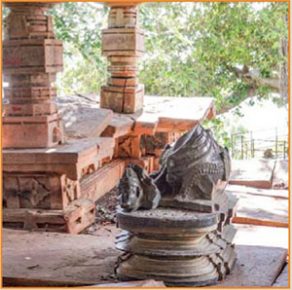
Join the author on a tour of ancient Siva temples, from the magnificent shrines of Andhra to the amazing rock caves of Ellora
BY ARAVIND GOPAL, KERALA, INDIA
The quest for the glorious past of indian heritage inspired me to pilgrimage from southern Kerala to some of the most ancient temples on the Indian subcontinent. These are amazing architectural edifices, almost all dedicated to Lord Siva, built in the early centuries of the current era. Wishing to go north, I skipped Tamil Nadu, where grand temples are so numerous that it would require a separate trip. That state is home to four of the 36 UNESCO heritage sites in India, and three of these are ancient Siva temples of unique architecture and craftsmanship, developed during the famous dynasties, such as Chola and Pandya. With the time available, I chose a pilgrimage to visit some of Siva’s homes en route to Varanasi. I traveled along the eastern coast of India to eastern Uttar Pradesh in the lap of the Himalayas, then west to the Indian Ocean and south back home to Kerala. The journey gave me a sense that most of the rulers of the princely kingdoms and the empires and their subjects were devotees of Lord Siva. The craftsmanship, dedication and fortitude required to build these huge temples with such immensity and excellence is astounding. Moreover, each temple has unique features excelling one over the other.
Many are recognized as monuments of national importance, protected by the Indian government through the Archaeological Survey of India (ASI). ASI officials told HINDUISM TODAY that architectural wonders still exist unscathed in thousands of temples across the country. Alongside them are often sculptures and structures that were damaged or completely destroyed by invaders. With just seventy years since independence, restoration work has only started. Preserving and protecting these sites requires huge sums of money. “Funds crunch is a major problem affecting the conservation and renovation works at several sites,” I was told.
We can only present here a small fraction of what was captured by my camera and notes. But hopefully this article will inspire you with a new sense of the re-awakening of Hindu India to help build a platform for its preservation and a living continuity for Hindus of the future.
All photos here and many more were captured through Aravind Gopal’s camera. See the digital edition of this magazine, which includes a slideshow of all his images.


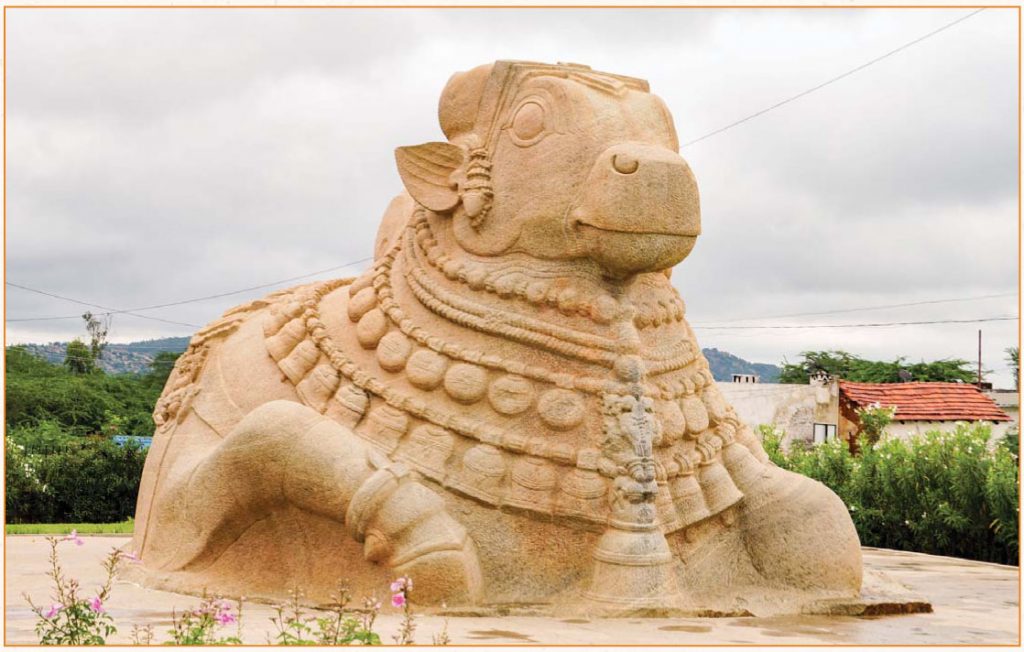
Massive devotion: A huge Nandi, whose eyes are forever fixed on the Nagalinga
1. Lepakshi, 2. Yaganti
The majestic 16th-century veerabhadra swamy temple in the remote village of Lepakshi, in the Anantapur district of Andhra Pradesh, heralds the commitment to religion, architecture and art of its builder, the Vijayanagara emperor Achyuta Deva Raya. The village’s rare pieces of craftsmanship include a great Nandi (mount of Lord Siva) near the village entrance, carved from a single piece of granite and almost 15 feet tall; a thrice-coiled, seven-hooded serpent forming a sheltering canopy over a black granite Sivalinga known as Nagalinga, and a hanging pillar inside the temple.
The whole stone temple is built over a rock. A real wonder in the mukha mandapam is the hanging pillar. I watched as our guide, Mr Reghukumar, whipped out a sheet of newspaper and passed it slowly under the large granite pillar from one end to the other. To the amazement of all, the paper emerged smoothly from the other side, demonstrating that the pillar is hanging, not resting on the floor!
North of Lepakshi, in a narrow valley between two hills, stands imposingly the Uma Maheswara Temple of Yaganti. Here the Sivalingam has both Uma and Maheswara carved into it. Legend has it that Lord Siva gifted this unique Sivalingam to the devotees at the request of Sage Agastya. And thus arose the Uma Maheswara temple, which was constructed/renovated in the 15th century by King Harihara Bukka Raya of the Sangama Dynasty of the Vijayanagara Empire.
The Nandi in this temple has an amazing property in that it grows about 1 inch in 20 years. Mr Raghavendra Sharma, a priest, told HINDUISM TODAY this fact has been verified and acknowledged by the Archaeological Survey of India.

Massive devotion: The hanging pillar at Lepakshi

Massive devotion: Nestled between hills

Massive devotion: The famed Uma Maheswara Temple

Massive devotion: A Nandi said to be growing
The Primary Temples Visited
The numbers below correspond with the numbers in the text headlines and the numbers on the map of India.
Andhra Pradesh: 1. Veerabhadra Swamy Temple, Lepakshi; 2. Sri Uma Maheswara Temple, Yaganti; 3. Mahanandiswara Swamy Temple, Mahanandi; 4. Mallikarjuna Jyotirlinga Temple, Srisailam
Telangana: 5. Chaya Someswara Swamy Temple, Panagal; 6. Thousand Pillar Temple (Rudreshwara Swamy Temple), Hanamakonda; 7. Ramappa (Ramalingeswara Swamy) Temple, Palampet
Odisha: 8. Lingaraj Temple, Ekamra Kshetra (Bhubaneswar); 9. Parasurameshwara Temple, Bhubaneswar
Uttar Pradesh: Kashi Vishwanath Jyotirlinga Temple, Varanasi
Madhya Pradesh: 10. Khandariya Mahadeva Temple, Khajuraho; 11. Udayagiri Caves, Vidisha; 12. Omkareshwar Jyotirlinga Temple
Maharashtra: 13. Ellora Caves, Ellora; Grishneshwar Jyotirlinga Temple, Ellora; 14. Pataleswar Temple, Pune
Karnataka: 15. Sri Virupaksha Temple, Hampi


3. Mahanandi, 4. Srisailam, 5. Chaya Someswara
About 40 miles east of yaganti is the mahanandiswara Swamy Temple, believed to be at least 1,500 years old. Of the nine shrines dedicated to Nandi in the Nandyal area—all within a ten-mile radius of Mahanandi village—the Mahanandiswara Swamy Temple is the most famous.
Uniquely, a stream of water emanates from beneath the Swayambhu Sivalingam in the sanctum sanctorum. According to priest Mr. Manikanta Sharma, this water is crystal clear, has healing qualities, and flows constantly all year round. Devotees are allowed to touch the water and may even touch the Sivalingam, unlike in most South Indian temples. The water flows into a holy tank and irrigates 2,000 acres of fertile land surrounding the village, where paddy, fruits and vegetables are cultivated.
We next proceed to Srisailam, high in the Nallamala Hills, to visit one of the 12 Jyotirlinga temples, the famed Mallikarjuna Jyotirlinga or Sri Bhramaramba Mallikarjuna Swamy Temple. Mallikarjuna means pure, pious or white (Arjuna) like jasmine (mallika). There are sacred ghats on the river Krishna just east of the temple.
Srisailam, the most famous Siva temple in Andhra Pradesh, is associated with many saints, including Adisankara, Siddha Nagarjuna, Allama Prabhu, and Sivasarani Akka Mahadevi. It is believed that Adisankara composed the famous “Shivananda Lahari” hymn here. The legends of the temple extend from epics to puranas; historical references date back to the inscriptions of the Satavahana dynasty (100bce-200ce). No photos are allowed inside this temple.
On to Telangana state! The Chaya Someswara Temple in Panagal was built by Udiaya Aditya Chola Maharaj during the Kanduru Chola rule in the 11th century. This tri-sanctorum temple occupies a one-acre compound. Mysteriously, it has a central pillared hall and three sanctum sanctorums on the east, west and north of the hall. The main shrine of Lord Siva on the west, facing east, contains a constant shadow in the form of a single pillar from dawn to dusk. The Sivalinga is never visible in natural light. Hence the name. Chaya means shadow and Someswar is Lord of Moon (Siva).

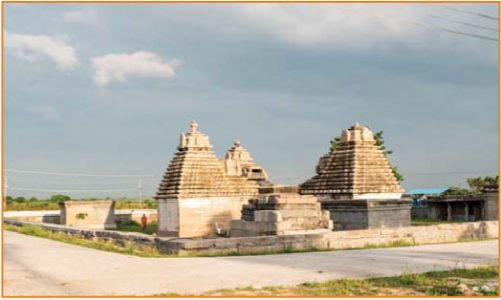



6. Rudreshwara, 7. Ramappa, 8. Lingaraj
Rudreshwara swamy temple, with its 1,000 pillars, was built in 850ce by Prataparudra I of the Kakatiya Dynasty. This stunning example of Chalukya and Kakatiya art is an active temple, under ASI control and renovation, with pujas held every day. Priests are appointed by the Telangana government’s Endowments Department.
Our last stop in Telangana is the Ramalingeswara Swamy, or Ramappa temple, at Palampet built in 1213ce by Recharla Rudra, a general of Kakatiya king Ganapati Deva. The temple has a marvelously carved and decorated black marble Sivalinga. The main structure of the temple, like the wall surrounding the compound, is reddish sandstone. The wall of the shrine and certain sculptures are black basalt. The mesmerizing carvings are “masterpieces of Kakatiya art, detailed carving, sensuous postures and elongated bodies and heads,” says Mr. Pradeepkumar, a journalist. Considered the brightest star in the network of medieval temples in the Deccan region, Ramappa was completed in about 40 years. A trustee of Kakatiya Heritage Trust (KHT) said he is confident that “Ramappa temple will be given the World Heritage status, as it fulfills a majority of the parameters set by UNESCO.”
The next leg of our journey, north to Odisha, crosses almost 600 miles of vivid geography, including plateaus, the eastern ghats, Chilka lake and many rivers. Finally, we arrive at the holy seashore city of Ekamra Kshetra (Bhubaneswar), the ancient capital of the Kalinga kingdom, referenced in the great epic Mahabharata. The current city of Bhubaneswar consists of the newly planned township on the northern side and the ancient temple town on the southern side.
Here we find the mighty Lingaraj Temple, originally known as Lord Tribhubaneswar, meaning Lord of the three worlds (Bhuloka, Antarloka and Sivaloka). Situated on about five acres of land guarded by high laterite walls, the temple is built of sandstone and laterite and has a huge curvilinear tower, or shikhara, about 180 feet tall. The height of the grand, beautifully carved tower is accentuated by deeply incised vertical lines. The entire temple is an example and benchmark of fully evolved Kalinga architecture.
Entry to the temple (restricted to Hindus) is through a majestic main gate in the eastern wall. Photography is not allowed inside. Upon reaching the huge sanctum sanctorum, we see that the visible portion of the Swayambhu (naturally occurring) Sivalinga is a granite block about eight feet in diameter but only eight inches in height!
The origin of Lingaraj Temple’s Swayambhu Sivalinga and the initial worship there cannot be traced in history, but early Sanskrit texts record the existence of a stone temple here as early as the 7th century ce. Fragments of this earlier structure seem apparent in the present building.
Legend has it that the Swayambhu Sivalinga of Lord Lingaraj was seen initially under a big mango tree, and that Lord Lingaraj created the huge sacred pond on the northern side of the temple, which is now a 20-acre, 23-feet-deep water tank built of laterite blocks in the 7-8th century and known as Bindu Sagar (Ocean Drop).
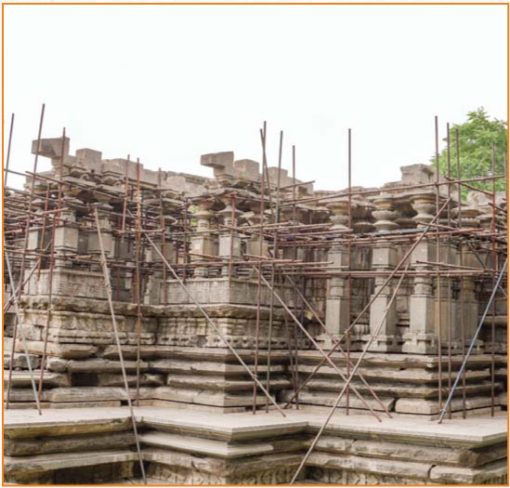

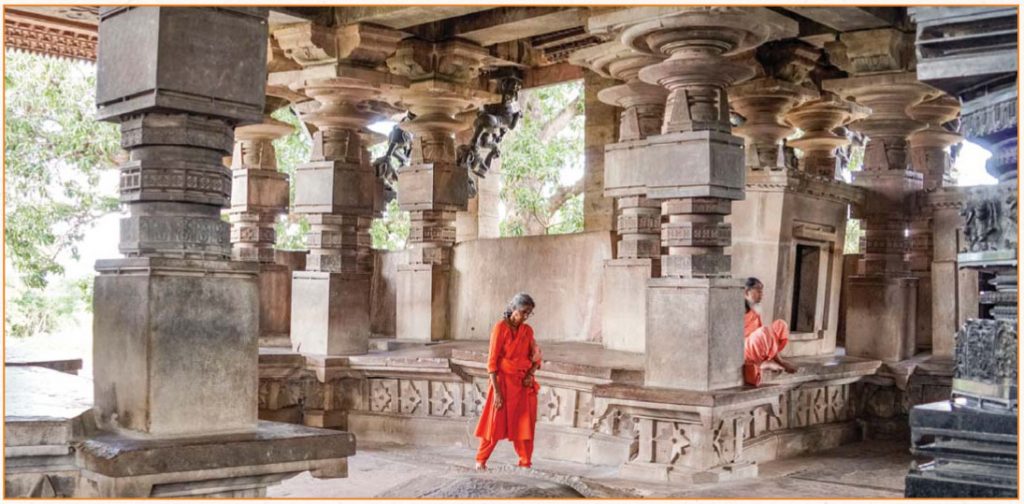





9. Parasurameshwara, 10. Khajuraho, 11. Udayagiri, 12. Omkareshwar
On the north ghat of bindu sagar, five small temples—Astasambhu, Uttareswar, Parasurameshwara, Mukteswar and Siddheshwar—have a grand view of the shikhara of Lord Lingaraj. Astasambhu is a temple housing eight Sivalingams; the name also refers to a collection of eight small shrines here. Parasurameswara Temple, built in the 7th century, has marvelous carvings. Most notable are the engraved sculptures of Sage Lakulisa, founder of Pasupata Saivism, testifying to the powerful presence of that great sect in the ancient Kalinga region. The small Mukteswar Temple is a fine example of Odisha architecture; the waters of the nearby Marichi Kund pond are believed to cure infertility in women.
We head north from Odisha to Varanasi, Uttar Pradesh, to fulfill a long-cherished dream of having darshan of Kashi Vishwanath. Situated on the western bank of the Ganga, India’s holiest river, Varanasi (previously known as Benares) is one of oldest surviving cities of the world and a cultural capital of India. In the heart of this city stands the Kashi Vishwanath Temple in full majesty, enshrining the Jyotirlinga of Siva as Vishweshwara or Vishwanatha—the Lord of the Universe. No photos are allowed in the temple, so I leave Varanasi with a sense of sacredness that can be had only by going there.
Heading homeward now, west and south through Madhya Pradesh, we come to Khajuraho. Entire books have been published about this UNESCO World Heritage Site. The largest, loftiest and most beautiful monument here is the mighty Khandariya Mahadeva Temple, with approximately 900 statues that showcase the excellent craftsmanship of the artisans. This temple has become famous for its erotic sculptures; but despite their notoriety, these account for only ten percent of all sculptures.
The famous caves at Udayagiri, on the Betwa river bank near the eastern edge of the Malwa plateau region of Madhya Pradesh, are among the world’s most ancient examples of rock architecture. The 20 caves here were created during the Gupta Empire between 380 and 415ce. Trekking on, we have darshan of Omkareshwar Jyotirlinga Temple, situated on an island in the Narmada River.



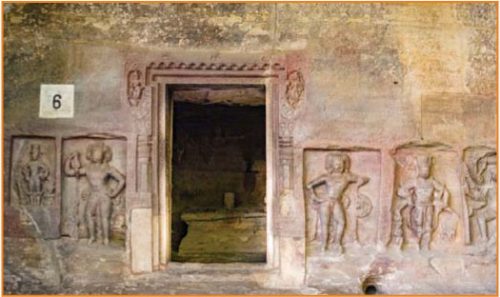


15. Ellora, 14. Pataleshwar, 15. Hampi
Crossing the narmada river and travel south into the interior of Maharashtra we see another wonder of ancient engineering, Ellora Caves (photos on pages 36-37). A UNESCO World Heritage Site, this is one of the largest rock-cut monastery/temple cave complexes in the world, featuring Buddhist, Hindu and Jain monuments and artwork dating back over 1,400 years. Viewing this uninterrupted sequence of monuments created from 600 to 1,000ce brings the civilization of ancient India to life. Cave 16 is the majestic Kailasanatha Temple, the largest single monolithic rock excavation in the world. An ASI sign reads, “The Kailasa is a great monolithic rock-cut temple isolated from the surrounding rock, excavated from top to bottom and scooped out from outside to inside. It is said that ten generations worked for it and took more than 200 years for its completion.” The engraved sculptures of Sage Lakulisa show the influence here of Pasupata Saivism.
After Ellora, we visit Pune’s Pataleshwar Cave Temple, an 8th-century rock-cut temple. Due to the city’s expansion, it is now situated downtown, on Jangli Maharaj Road. The temple, made of basalt rock, is dedicated to the God Siva. Worship continues here, and the Sivalinga is anointed with ghee and yogurt. Over 1,300 years old, this is the oldest monument in Pune.
From Pune, we trek 343 miles to our last destination, Sri Virupaksha Temple in Hampi, Karnataka, on the banks of the river Tungabhadra. Hampi, now a UNESCO Heritage Site under Archaeological Survey of India (ASI), was the capital of the Vijayanagara Empire. It was India’s richest, and the world’s second-largest, medieval-era city. Hampi’s highly developed society was spread over 4,000 hectares in the Tungabhadra basin, with many temples, palaces, bazaars, residential areas, water supply technologies and networked channels. The main pilgrimage center here is the Sri Virupaksha Temple, which withstood the test of time and is now being renovated by the ASI. The temple has been an active center of worship without interruption from the Chalukya period, in the 7th century ce.
From Hampi I returned to Kerala with a new vision of Lord Siva, inspired to know that we have in India living continuity of His worship for at least sixteen centuries—indeed, from time immemorial. With only 70 years since Independence, Hindus have much to do to regains our treasures. Yet I am encouraged to have witnessed a renaissance of worship and reawakening to our glorious temple heritage.


A Legacy of Devastation
Weather and the passage of time have made their mark on India’s ancient monuments. But sadly, much greater damage and destruction was done by conquerors, invaders and other foreigners. From the Vedic age, the evolution of humanity reached the classic age during the Gupta period. However, the persistently brutal and savage attacks from Islamic rulers arrested this evolutionary growth for centuries.
The invader dynasties, especially the Mughals of the Delhi sultanate, showed extreme fanaticism. Their iconoclastic attacks plundered the kingdoms, destroyed and desecrated universities, thousands of temples, and ancient treasures of architecture and art. Some temples were converted into mosques and petty tombs. The Muslim rule (8th to 19th century) submerged the Indian subcontinent, especially the northern regions, under anarchy, violence, plunder, war crimes, anti-woman activities and holocausts. Unconquered areas of South India and Odisha retained most of their magnificent ancient Hindu temples.
The list of damaged sites is too long to include here. The irreparable damage done to these artistic wonders is unpardonable. For example, the fanatic Deccan Muslim confederacy pillaged Vijayanagar at Hampi for six months. The remains of this great city were scattered over hundreds of acres, speaking volumes about the savagery inflicted on India by her invaders.

